
A schizo-erotic reading.
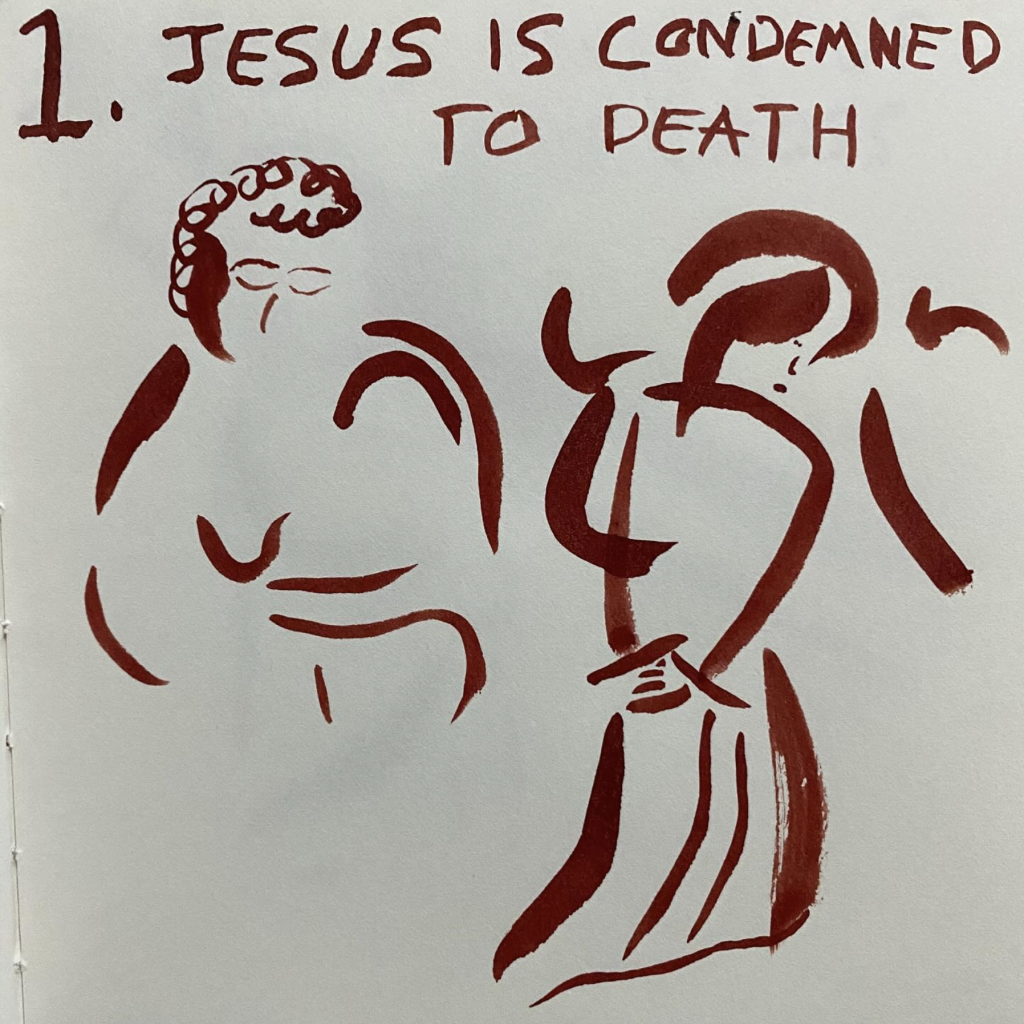
In The Schreber Case (1911) Freud makes this astonishing claim that there is a ‘genetic’ link between Judge Daniel Schreber’s desire to be a woman penetrated by a man and his schizophrenic delusions of being Christ crucified. If there is such a perverse sexual content to the crucifixion then let us analyse it from the perspective of radical atheist theology. What psychological functions might it serve? How is this collective dream structured? In this version of the stations of the cross I will pontificate on the meaning of each stage leading up to Easter Sunday. We begin with the wrongful accusation. From Kafka to Lynch the idea of being wrongfully accused is a central element of anxiety. The concept of anxiety will therefore be central to my reading.
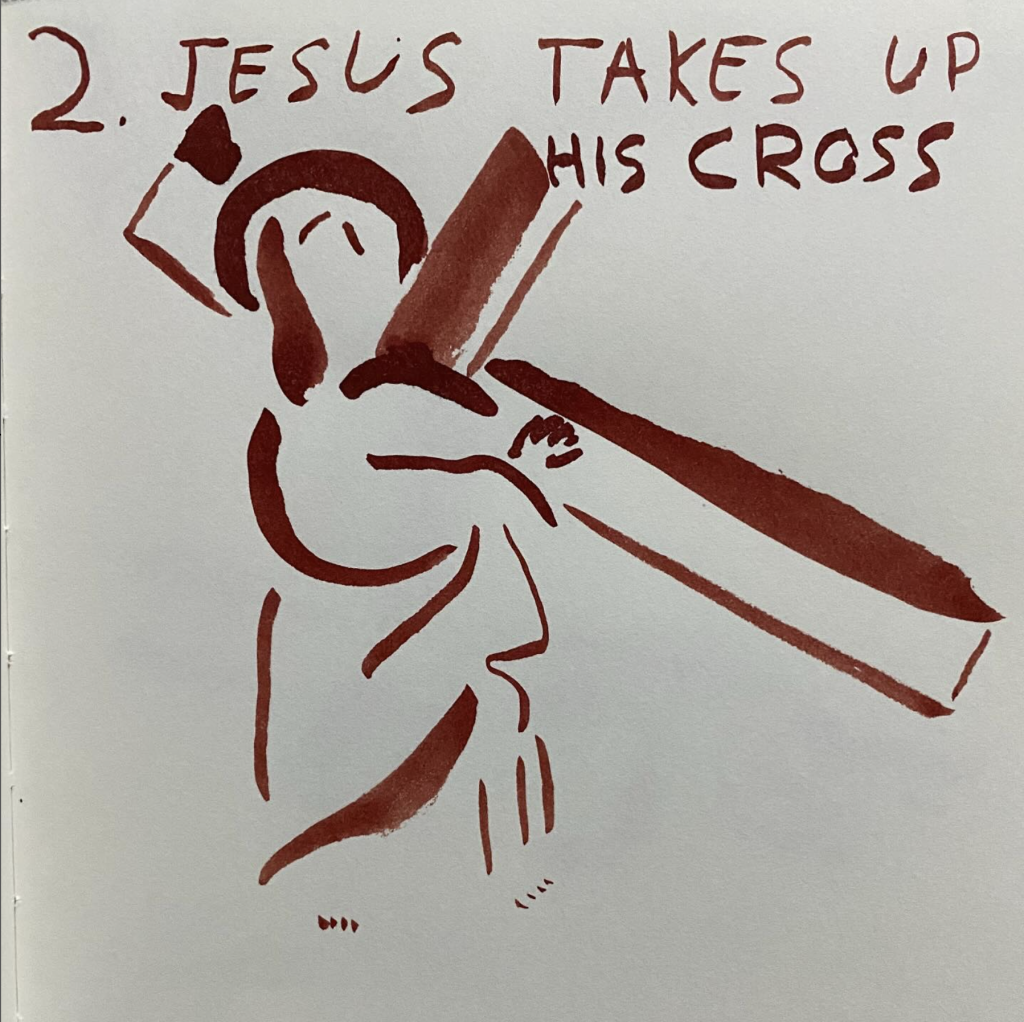
“Can Jesus microwave a burrito so hot that even he can’t eat it?” – Homer Simpson.
I can do that of course so surely Jesus can. The crucifixion is the key element of Christian contradiction. The paradox is the question of whether power entails the power to be powerless. This is the classic atheist reading. That we needed a story to signify the death of God and the transition to a post religious world. Engels paraphrases Hegel in the Anti-Dühring (1877) and says that freedom is the recognition of necessity. Christ taking up the cross can then be read as taking on the inevitability of death and nothingness. The walk to the crucifixion will be a carnival and a pandemonium. It is not a suicide but the wilful recognition of the necessary conditions of life. A materialist account of accepting limits freely.
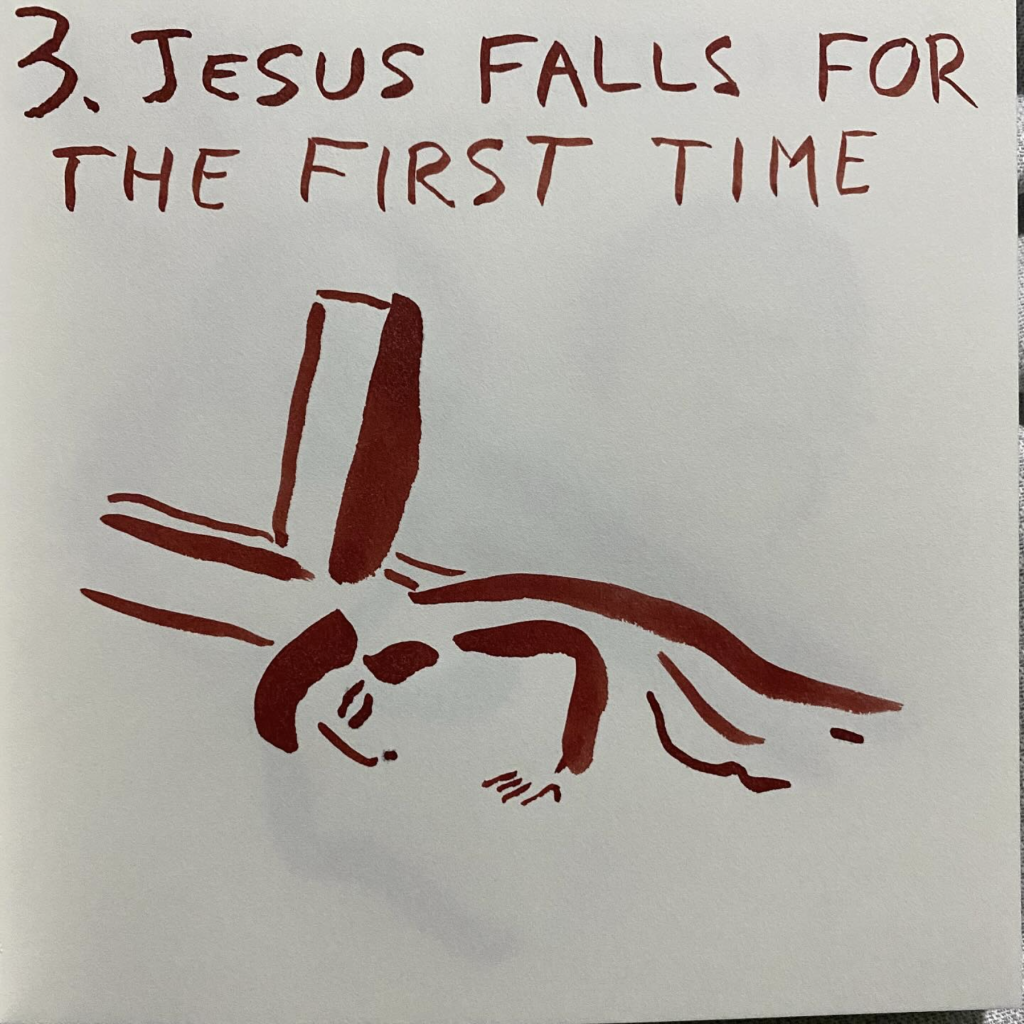
A pratfall! Pure humiliation and there will be more! It is a supreme arrogance to look at our own failures and humiliations and call them divine. Is that the basic story of the crucifixion? By humiliating God we exalt ourselves. We are capable of killing Christ! Nietzsche calls us the ‘bungled and the botched’. We are an animal gone wrong. An unplanned pregnancy caused by a broken condom. The evolution of consciousness was a catastrophic error on the part of the world. I do think that we are such a disfigured animal that we would exactly misrecognise a pure soul and kill it through arrogant misunderstanding. Mentally disfigured by language. A positive reading of this is that being fucked up is what constitutes the subject and that that is what is divine in us and inaccessible to animals. They cannot be fucked up through pure self reflection. They cannot go mad. We can simultaneously brag and brag humility with Christianity. Thomas Jefferson said that pride was the hardest sin to overcome because if he considered himself without pride then he would take pride in not having pride. But if we are the people that kicked a man when he was down are we then ashamed? Can we have no pride and no shame simultaneously? To err is human. To fail is divine.
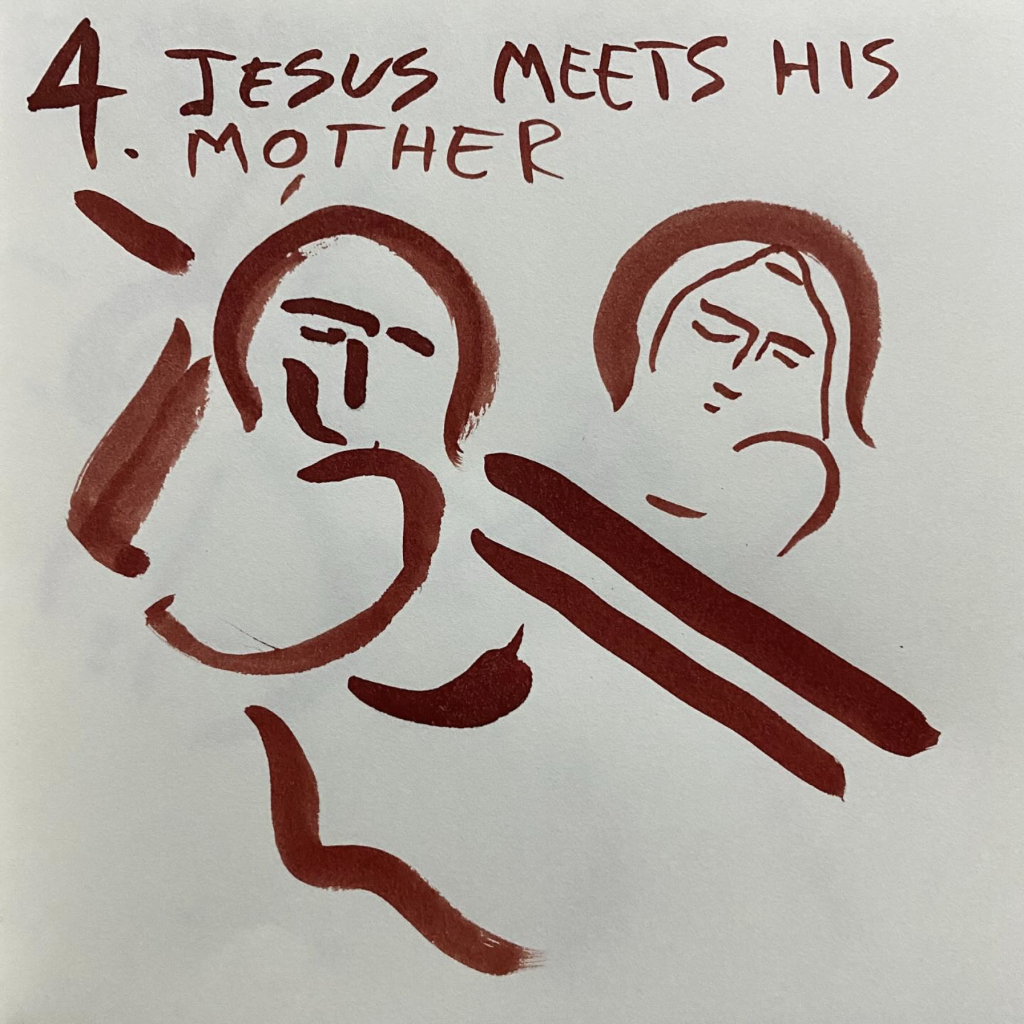
The standard atheist account of the nativity might be that Mary was raped by a Roman soldier or had a teenage love affair. Joseph then agreed to marry her and not have sex until after the birth to provide legitimacy. Joseph as cuckold always struck me as an interesting character and his absence from the defining event of Western culture could be because uncertainty over our paternity is a constitutive element of the self. This to me is implied in the superstition free Gospel in Brief (1892) synopsis written by Tolstoy. The vulgar Freudian reading of the virgin birth fantasy is that it is traumatic to discover that your mother had sex with your father. This appears as a primal betrayal. This is actually a reading of all infidelity that it is a regression to the infantile separation anxiety. Women can orgasm during childbirth as a direct result of the terrible pain. This sets up a truly crass reading of the virgin birth fantasy that Christ gave Mary her first orgasm and he therefore is free from the existential guilt of jealousy of the father. Might this be the most important aspect of the Christian fantasy. This is a neatly dialectical referent to the crucifixion as a depiction of being anally penetrated that we see in the Little Hans case (1909). This fits with the stations as a model of a life and the cuckold fantasy as concerned with the primal scene. In the contemporary world around two percent of children are incorrect regarding their father. One can only imagine greater ambiguities in the time of Christ due to the lack of the capitalist disciplinary apparatus. Meeting the mother is both to be seen humiliated by your creator and to face the anxiety of unknown paternity. The steady march to death intensifies.
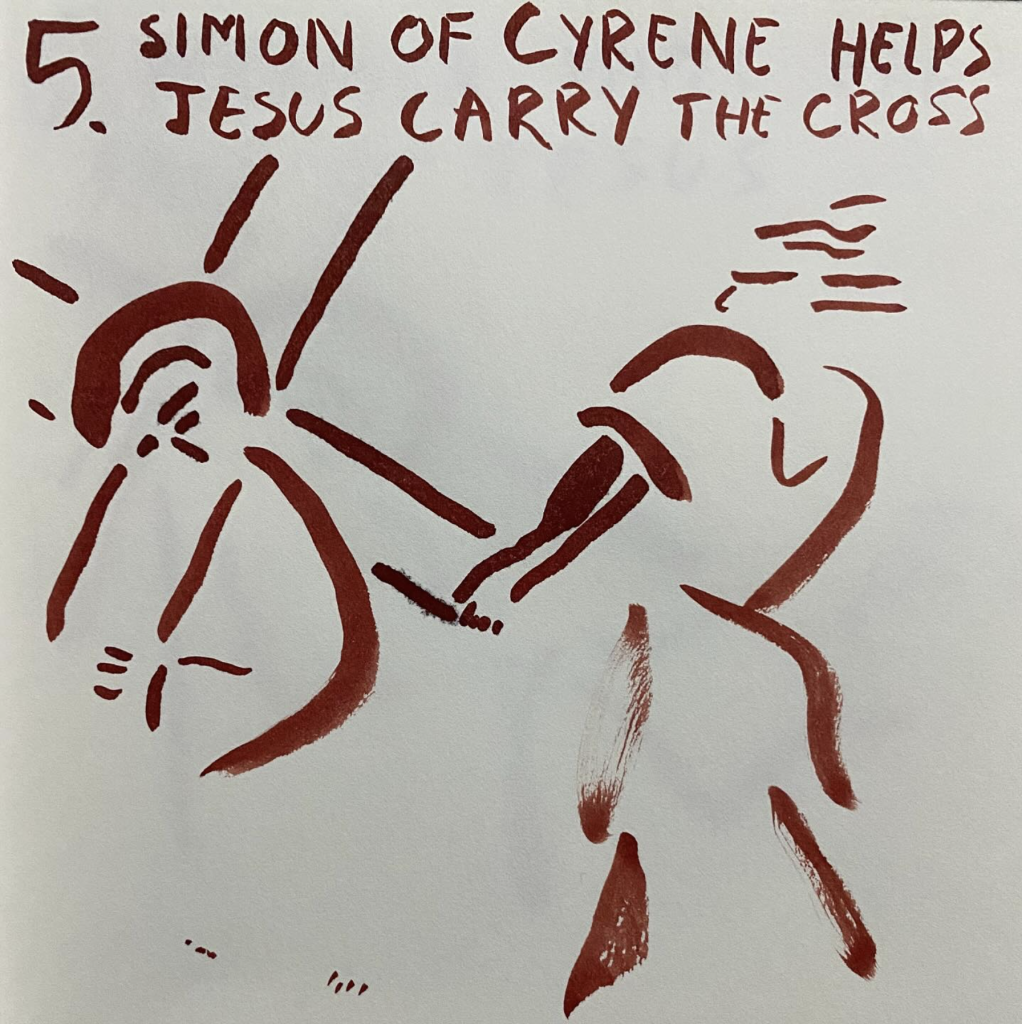
This moment is comical to me. Imagine seeing the pathetic site of a political prisoner carrying his own execution device. Feeling a moment of pity Simon tries to help him and all he can think to do is help him carry the weapon itself. There is a dramatic irony to the comedy and the total failure of all except Christ to understand the significance of the injustice. We the audience are aware of the end of the story and so see how Simon is oblivious. The scene puts the viewer in a God like position because we know the end and know how Simon will later learn the significance of his act.
“Critique is the condition for a possibility” – Chris Cutrone’s summary of the Kantian project of critique.
“All critique starts with the critique of religion” – Contribution to the Critique of Hegel’s Philosophy of Right, Marx (1843).
We should not compare Christianity to modern science but to modern culture. It is not in conflict with contemporary evolutionary biology but with the Marvel Cinematic Universe. Should ideology critique move on from the crucifixion then and concentrate on Ant-Man and the Wasp: Quantumania (2023)? My argument is that the two must come together. The Crucifixion has not been conclusively critiqued such that the possibility to fully bury it and construct a new culture exists. Christianity retains the possibility for an immanent critique. The carnivalesque comedy of the procession to the cross is a further aspect of the total condensation of the plot. The condensation of the comic and the tragic. It continues to yield to critique. Each new set of economic and cultural conditions has a new reading. It is the thoughts of the ages condensed into a short walk. A metaphor for life and death.

The widow gets sentimental! Like Simon of Cyrene helping to carry the cross wiping his face is a pathetic act of help. Farcical. The man is about to be killed. A slight wiping of sweat and blood is a minor aid. Nevertheless, it contains a kernel of grace to go against the baying crowds. That some felt sympathy may even heighten the guilt at taking part in the killing. There are no excuses. In the heat of anxious terror grace is still possible. Surely the widow knows a little sadness. The festival of depravity is amusing but you might still have a momentary lapse into sentimentality.
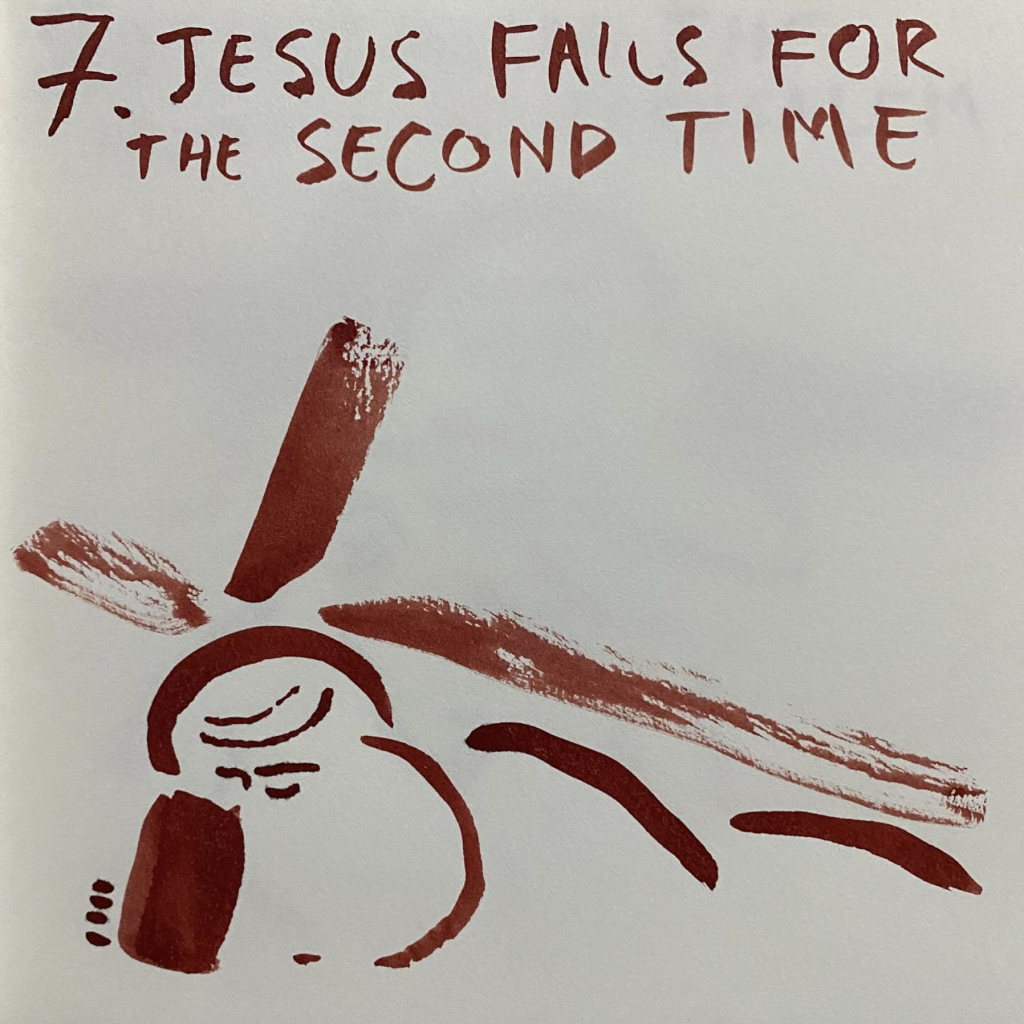
Repetition is a key aspect of the humorous. They say if you see one secretary crying it is tragic but if you see a second it is funny. Falling down is the perfect example of the superiority theory of the comic. It adds to the carnival nature of the stations. We can imagine the bulk of the public drinking and laughing and enjoying the spectacle. To be laughed it is also a central component of humiliation. Don’t we imagine that we are being laughed at in our lowest moments? In each moment we can identify with either the crowd or the victim. The schizophrenic intensity is building.
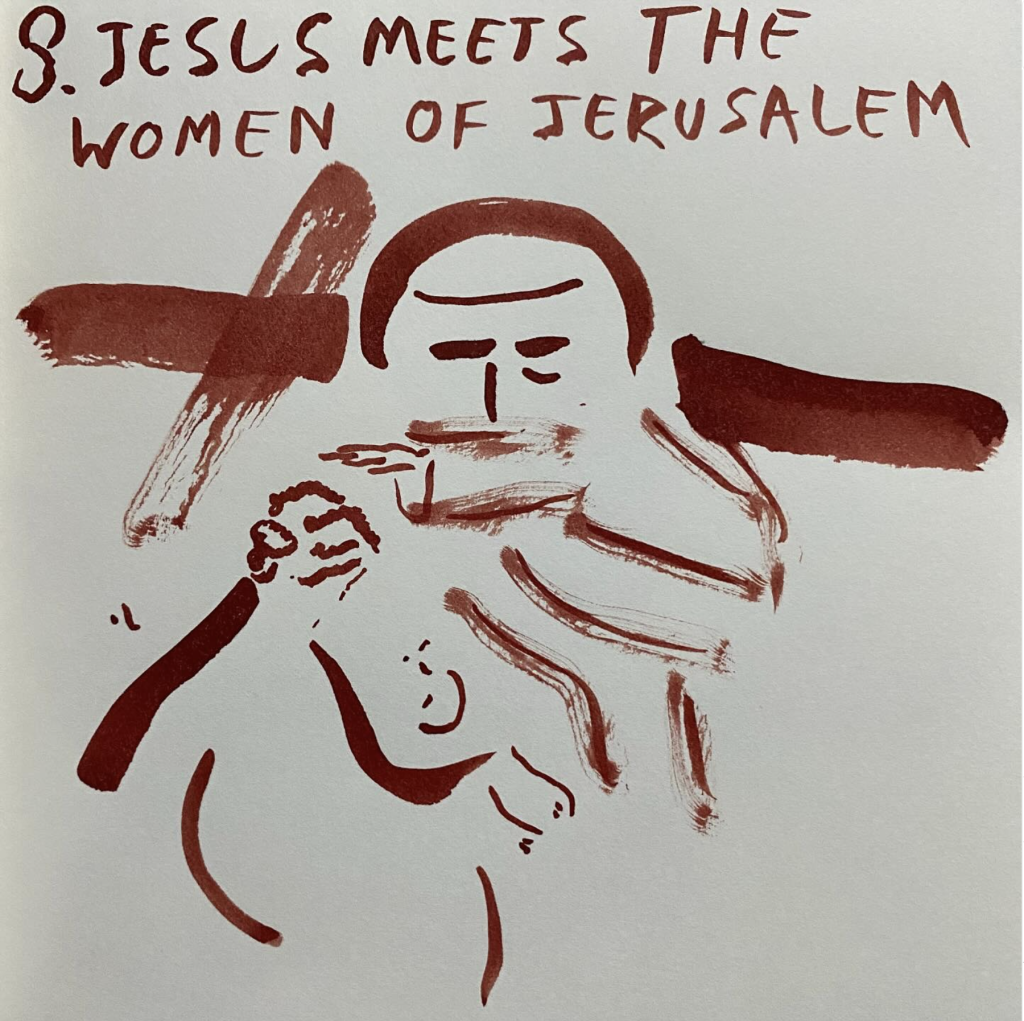
Engels called woman the original proletarian. Within the patriarchal marriage the man was the bourgeoisie and the woman the working class. Here we therefore see the basic inversion at work in Christianity of honouring the powerless. This is Nietzsche’s central critique of Christianity in its undermining of power being driven by ressentiment. The pathetic are heralded and the strong are brought down. The lambs shall eat the meat of eagles. That is what makes the religion interesting as a technology for population control. It symbolically resolves the resentment of the weak through its honouring of them. This is most perfectly achieved in the Magnificat. A poor woman and nobody is chosen as the spring of all power. The failed, the ill, and the insane can call the world upside down while the powerful can claim modesty and maintain position. But arguably there is a radical element at play. For that reason I see Christianity as a central ideological battleground. The previous move of atheism to retreat off the territory may have been a tactical error. What did Jesus talk to the women about? Abortion access, miscarriages, and the menopause? Pay differences, misogyny, and maternity leave? In all seriousness, yes!

In the prodromal stages of schizophrenia one warning sign is an intense interest in the occult or religious ideas. Adorno calls an the occult a regression of consciousness. A regression is a return to an earlier stage. To a more fundamental stage. We are all constructed on these irrational foundations. The third fall as a high point in humiliation is for me therefore the apex of the schizophrenic disorientation. In Sabina Spielrein’s account of a case of schizophrenia a woman’s distress at her husband raping her and his sex with other women is unified with her misery at her miscarriage into an incoherent totality of religious fervour and aesthetic theory. The stations of the cross structure the descent into insanity. Sexual humiliation and its religious opposites clash in a disturbed mind which is the universal foundation of sanity. The passage of the cross in reversed time is a return journey to the birth of consciousness.
If the first repetition is comic what is the second? This to me is an aggressive assault on the audience. Daring us to laugh at a pathetic man brought down with our fingers pointed. Still laughing? The carnage is ramping up. The schizophrenic breakdown is peaking. Can the mind survive this radical primal humiliation tracing back to the earliest moments of infantile indignation? The mind is growing incoherent.
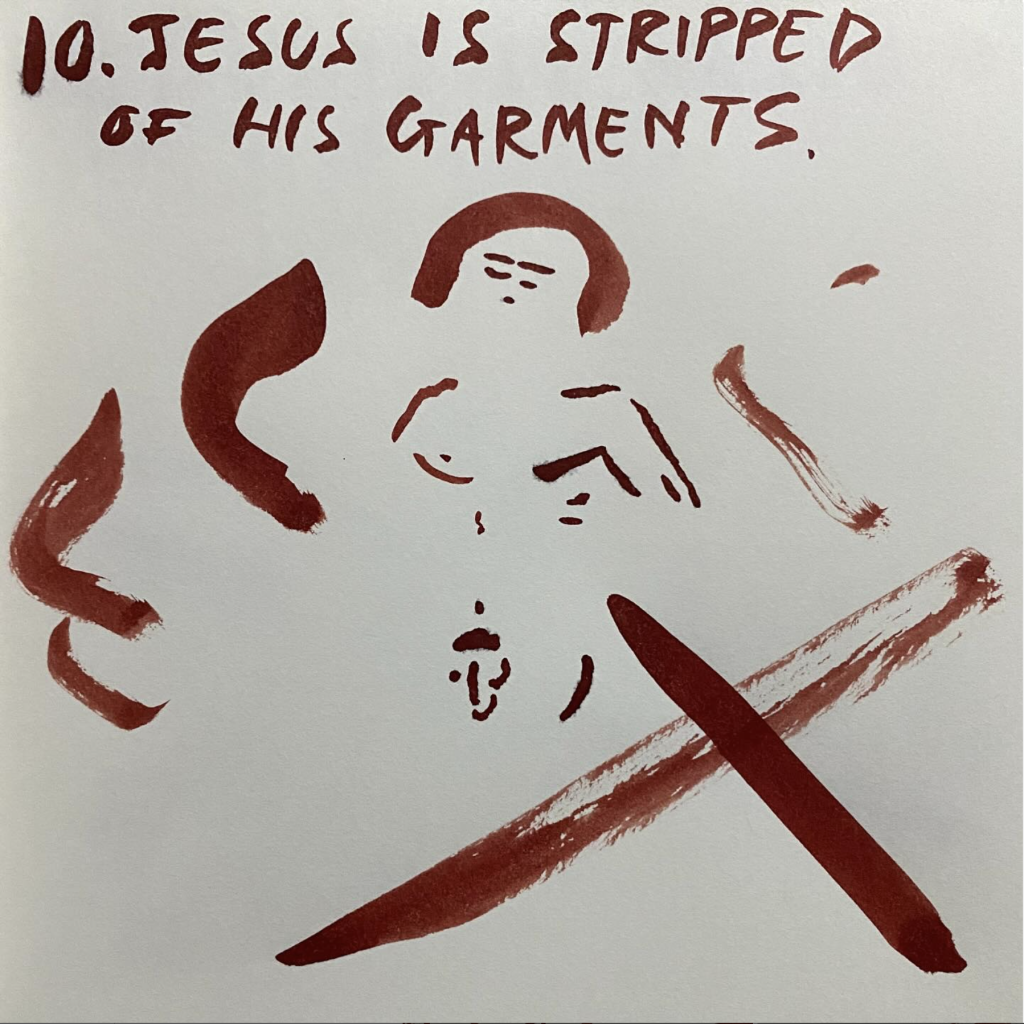
The pinnacle of the humiliation. Here we see raw human flesh. I would probably have taken part in the mocking and the cruelty. Is there a sexual sadism? Yes. I have heard it said that there is always a libidinal element to ritual violence and surely here we see the height of human baseness. Do we take a sadistic pleasure and identify with his tormenters? That might be the real genius of the story. We can enjoy his suffering from the perspective of our violence and we can enjoy the innocence of his wrongful accusation from a masochistic position. Christianity puts us in a position of power over God. As Hinduism claims to venerate the cow but then leads a cow around in a ceremony and dresses it up as if to mock it it is an inversion of modesty. We call ourselves Gods with religion. We claim our language lifts us above the animals and nature and we have both the power and the cruelty to humiliate even the highest. We can bring all down to the level of shit!
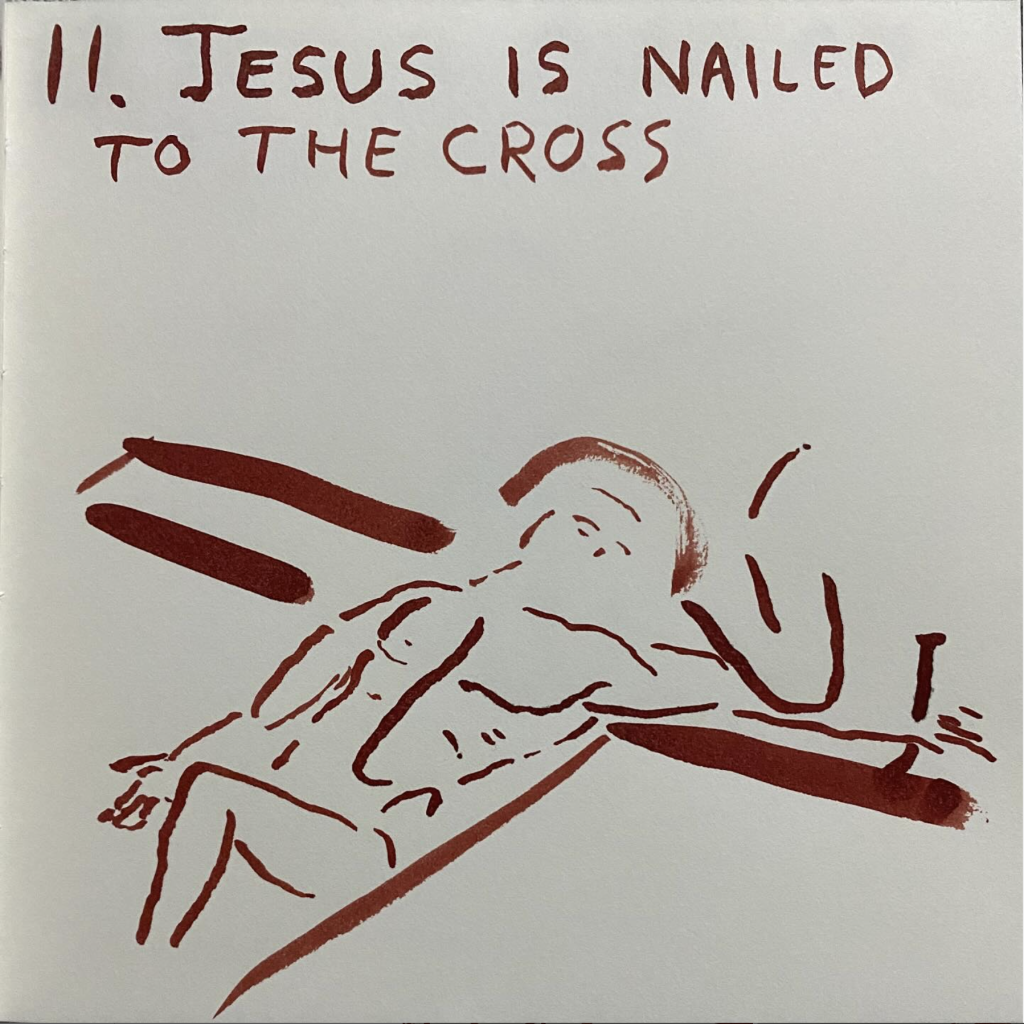
To enjoy Christianity you need a taste for blood! You must be able to imagine weilding the hammer. And to enjoy it! You must stare at the phallic symbol of a nail in flesh directly. You must show no mercy!
“Men never do evil so completely and cheerfully as when they do it from religious conviction.” – Pascal.
I can think of worse physical torture. It is not the most painful thing I can imagine. Burning by fire always strikes me as the most frightening violence. Instead it is almost banal in its humiliation. The agony that will follow was surely terrifying but still no one present knows what is to come. Jesus himself is not even aware that there will be no help from any God. The true weight of an atheist world is dawning on him. There is no hope. The nightmare is here. This is what makes Christianity the anti-religion par excellence. A warning against the religious fervour which helped us take part in the religious festival of the crucifixion.
It is typical to mask the genitals. Perhaps for prudeness or perhaps to create a radical ambiguity over the sex of the beast!
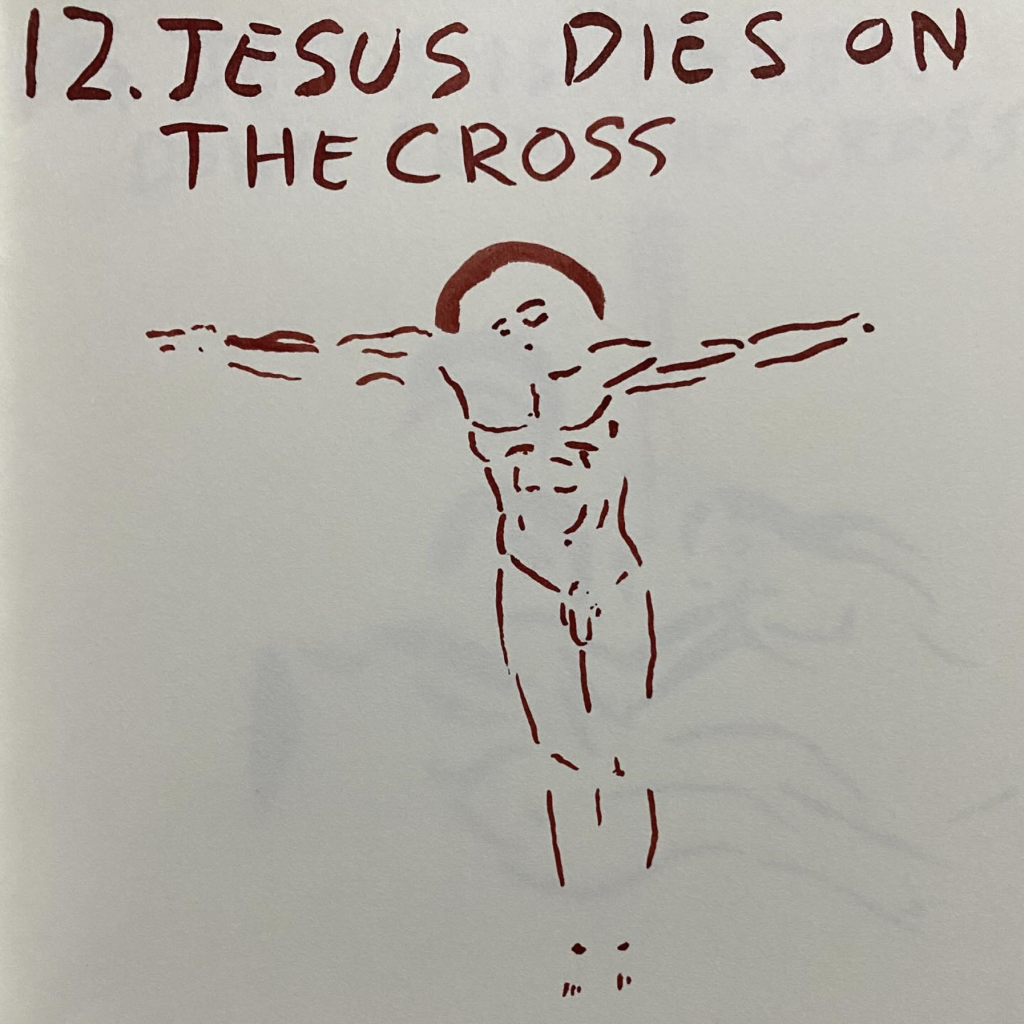
“Eroticism, it may be said, is assenting to life up to the point of death.” Erotism: Death and Sensuality by Georges Bataille (1987)
For the mother to watch the death of the son is the ultimate incest. They say that you cannot look directly at the sun or death. The atheist reading of the crucifixion concerns the impossibility of full atheism. Only a God could be fully atheist because only a God could look straight into the pit of death. Christ’s discovery of atheism on the cross was his genius. A weaker mind would have fallen into religious certainty or sentimental platitudes. Christ faced his own abandonment and the meaningless of his life. He realised that the prophecies of a new prophet to end all prophets were ironic and all he was was a pathetic political apostate being executed by the state to be forgotten. Therein lies the irony of the whole project of atheist Christianity. The real material Christ cannot have seen the full nothingness of existence but he discovered the ideal. Like an asymptote of how much truth a human mind could conceivably take before schizophrenic disintegration. In a previous Easter I drew the seven words on the cross. If the stations are a metaphor for a life then the seven words are the stages of death. If the crucifixion is the highest image of death then so to it is the height of eroticism. The orgasm ideal.
The last seven words on the cross:
1. Father, forgive them; for they know not what they do.
2. Verily I say unto thee, To day shalt thou be with me in paradise.
3. Woman, behold thy son! and Behold thy mother!
4. My God, my God, why hast thou forsaken me?
5. I thirst.
6. It is finished.
7. Father, into thy hands I commend my spirit.
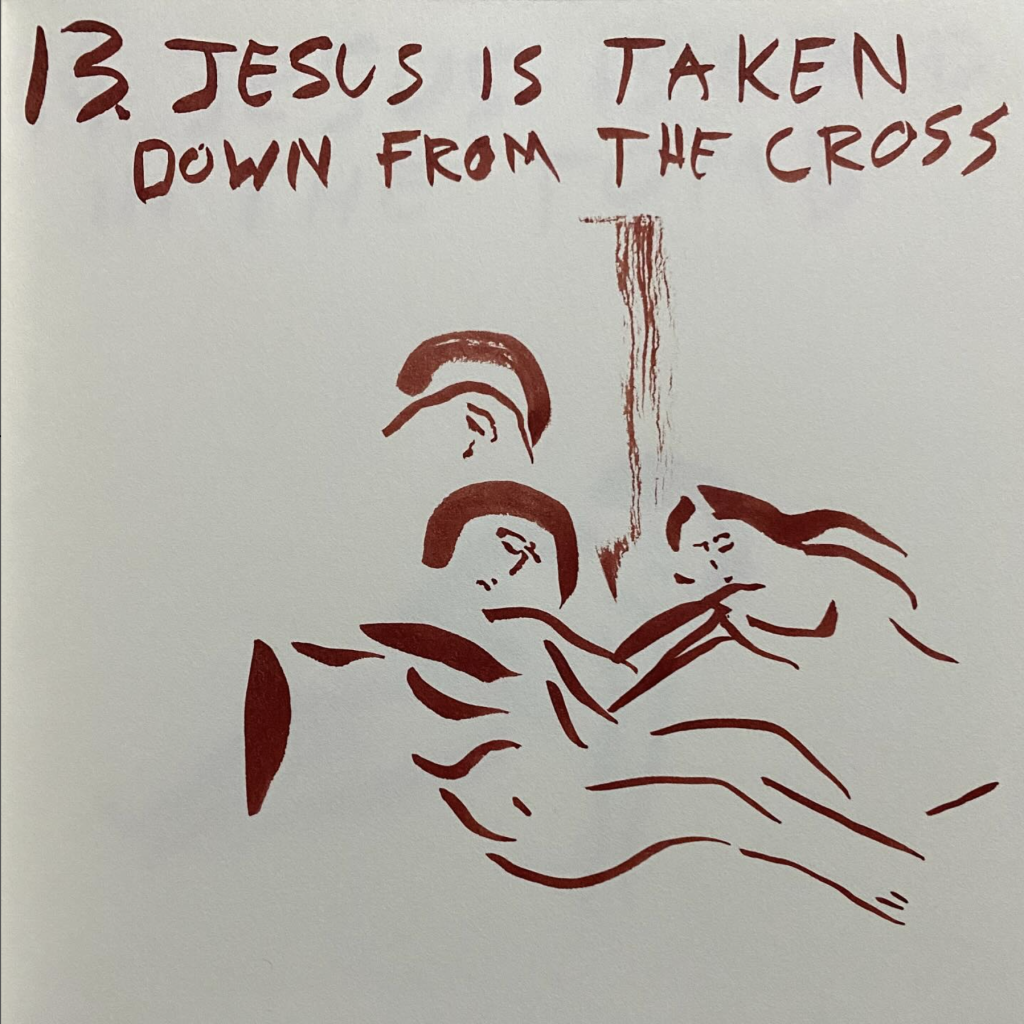
“How shall we comfort ourselves we murderers of all murderers” – Nietzsche, from The Gay Science (1882) God is Dead section.
Nietzsche was of course referring to modern science, the lack of need for religion in an industrial economy, and the disenchantment of the world later theorised by Max Weber. We can also read the Crucifixion as our murdering of God and creating the atheist world view. We the Christ killers! We shall reign over the Earth for two thousand years!
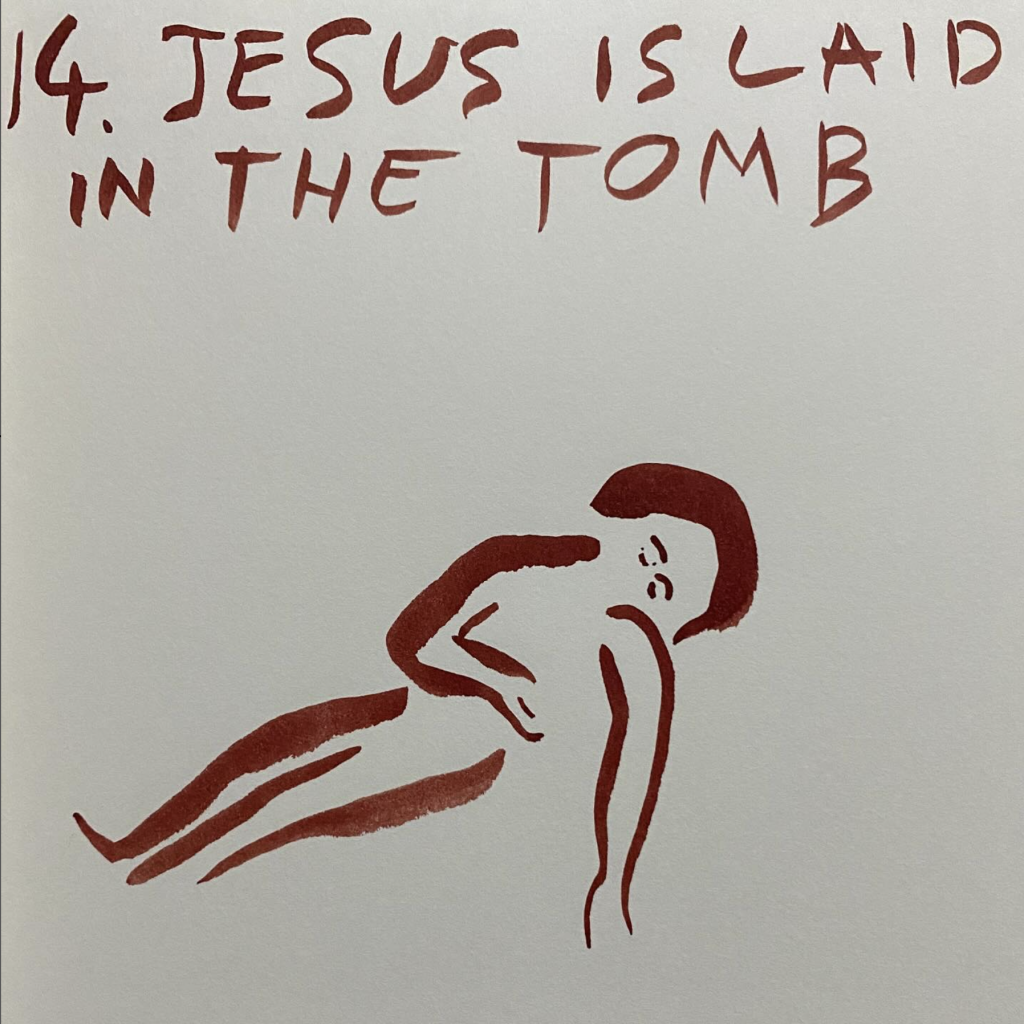
We will inevitably end with a consideration of the Hegelian concept of sublation, aufhebung, or perhaps colloquially overcoming. There will be no image of the resurrection which is a purely mental sublation event. The best example of sublation I think is relativity theory where some basic facts were finally sublated in to a coherent whole which disolved contradictions. The mind can produce and destroy the ontological proof by thinking alone. The resurrection for me then is the sublation of the notion of a physically existing God. Instead by our killing of a pathetic man simply because he was a genius creates the conditions for a moral sublation. The good news is that God has been killed. We killed him and so become aware of our status as God slayers. We, the “murderers of murderers”. We walk in to a terrifying new epoch of freedom and responsibility.
